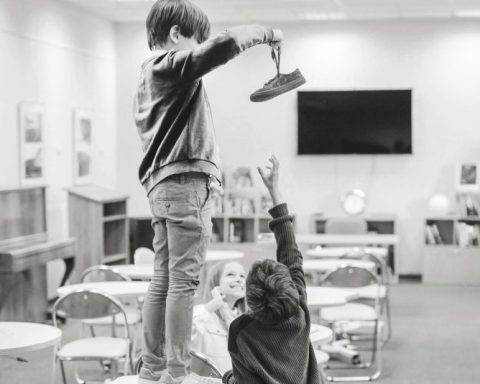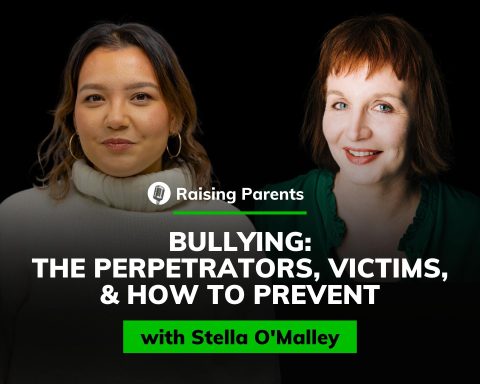Contrary to what movies and TV shows have led us to believe, bullying is more than just the victims being shoved into lockers, thrown into dumpsters, and other visible physical assaults. There are many ways that a child could be bullied.
Unfortunately, most people are not aware of how certain situations could be considered bullying. Even most children in a study defined bullying as mere aggressive and harassing behaviors.
What exactly is bullying?
Despite years of studies, experts haven’t been able to reach a conclusive definition of what bullying is. Regardless of the ongoing debate, Olweus’s (1996) definition — the aggressive behaviors that are intentional and usually repetitive, done in an asymmetric power relationship — has been mostly accepted and cited by researchers.
What about unintentional bullying?
Referring to the definition, one’s actions were considered bullying if they consisted of:
- repetition,
- power imbalance, and
- intention to harm.
In that case, what about when person A with higher social status jokingly name-calls his less popular friend (person B) regularly but has never wished to inflict any harm?
Olweus in 2013 argued that assessing the perpetrators’ intentions does not happen by simply asking about their intentions, but instead by understanding the context of the interaction. If person A acknowledges that name-calling an individual might make them feel distressed, the awareness may be considered enough to classify his behavior as aggressive.
However, Olweus also pointed out that the victim’s perspective could also be an additional factor in assessing the situation. If person B did not perceive the name-calls as unwanted behavior, then it could be concluded that the intention to harm is absent in this case.
Types of bullying
As you have gained an understanding of what bullying is, it is important to acknowledge that harmful behaviors could manifest in many forms. Here is the major categorization of bullying widely used by researchers on the subject.
Physical bullying
This type of bullying happens when the bullies assert their dominance toward their victims by using physical attacks (e.g. punching, kicking, pushing, spitting), forcibly taking or damaging their belongings, or coercing them into performing the bullies’ order. As the aggressive interaction between the perpetrators and victims happens directly, this type of bullying is visibly easier to identify.
Thus, when you notice the presence of unusual physical marks (e.g. bruises, scrapes, scabs, fractured bones) on your children or realize that their personal items have been mysteriously missing or damaged, there’s the possibility that they are being physically bullied.
Verbal bullying
Another way bullies could directly cause harm to their targets is by engaging in verbal bullying. It is done by name-calling, taunting, or threatening.
However, verbal bullying isn’t always transmitted in the form of oral communication, as it may also be delivered through offensive and threatening gestures or written notes.
Despite not physically causing any injury, verbal bullying isn’t necessarily less dangerous than physical bullying. As it tends to leave little to no visible signs or proof, the risk of caregivers and teachers not being aware of the situation is much higher. As a result, the bullying could occur for a longer period and worsen the victims’ mental state.
Relational bullying
Similar to verbal bullying, relational bullying is also the type that could be employed directly and indirectly. The main difference between the two is the goal. When verbal bullying aims to harm the person, relational bullying is rooted in the intention to damage the person’s social relationships and reputation.
Direct relational bullying is done by the perpetrators’ visible attempt to actively ignore the victims or keep other peers from interacting with them. Indirect relational bullying, on the other hand, consists of a more covert strategy such as spreading rumors or posting the victim’s embarrassing photos on the internet.
Bullying in various contexts
The discourse on bullying tends to be focused on the school environment. In their book, Smokowski and Evans illustrate how violence in various settings could also be considered a form of bullying due to the presence of bullying features (repetition, power imbalance, and intention to harm). It could occur in the digital realm, at home, in intimate relationships, in college environments, and other settings.
Below is the breakdown of bullying features of each of these types. Bear in mind that this is not an exhaustive list. Smokowski and Evans in their book indeed pointed out the overlap between violence and bullying in various contexts, but it doesn’t necessarily mean that bullying only exists in these situations.
Bullying in the digital environment
Cyberbullying is the use of digital technology to intentionally cause any harm that may happen once or repeatedly.
Types of cyberbullying
- Flaming: Online argument that generally takes place in a public online environment (such as a community chat group) where both parties verbally attack one another.
- Harassment: A repeated act of sending abusive and degrading comments. The differences between harassment and flaming are that the former usually takes place in private channels (such as email and text messages), lasts longer, and is directed at a single victim.
- Denigration: The act of digitally circulating information (that is frequently false or manipulated) to tarnish one’s reputation or social relationships.
- Impersonation: Sending harmful messages or misinformation using a fake account (usually under another person’s identity). This type of cyberbullying is not only harmful to the recipient of the messages, but also to those whose identity was stolen.
- Outing: Disclosing someone’s private or humiliating information on the internet without their consent.
- Trickery: Luring the victim to disclose their private and/or embarrassing information to expose them online.
- Exclusion: Intentionally excluding someone from an online group/forum.
- Cyberstalking: Persistent and severe harassment, denigration, and threats that cause a great sense of fear toward the victims.
- Happy slapping and hopping: Intentionally slap and/or physically assault an individual. The process is recorded and posted online to humiliate the targets.
- Image-Based Abuse (IBA): The perpetrators circulate victims’ intimate photos or videos without their consent. Digitally altering someone’s photo to sexually objectify them is one of the many IBA manifestations
Bullying features
- Repetition: The repetition isn’t measured by the number of times the perpetrators attack the victims. Instead, the criteria that cause the repetitive impact on the targets are the number of bystanders who view and forwarded the attack.
- Power imbalance: The online crowds give the impression of asymmetrical power that inhibits the victims to fight or avoid the attack.
- Intent to harm: The assessment of whether the actions are harmful or not depends on the victims. Thus, even if the sender claims that the comments they sent were meant to be a joke, it is still considered bullying if the recipient felt hurt.
Bullying by parent(s) or caregiver(s)
Child maltreatment is the mistreatment of children under 18 in terms of their physical and emotional well-being, usually inflicted by parent(s) and/or caregiver(s). It could manifest in the forms of sexual abuse, neglect, negligence, and/or exploitation.
Bullying features
- Repetition: The nature of child maltreatment that tends to happen more than once.
- Power imbalance: Children are powerless against the parents’ or caregivers’ authority.
- Intent to harm: Any type of mistreatment causes harm to children. The children’s perspective in assessing the degree of harm caused by the treatment is fundamental, regardless of the parent’s or caregiver’s intentions.
Bullying by sibling(s)
Sibling violence is an aggressive behavior pattern between siblings that involves physical and verbal attacks driven by the need for dominance.
Bullying features
- Repetition: Sibling violence could be considered bullying if the victimizations occur continuously.
- Power imbalance: The power imbalance between siblings is different for each family. It could be determined by age, size, gender, or family dynamic (such as siblings that are more favored by the parents or siblings that are more cognitively advanced).
- Intent to harm: The intention of harm could be rooted in the need to acquire resources in the family (parents’ affection, toys, clothing, and food) or simply to hurt the other sibling.
Bullying by an intimate partner
A type of physical, psychological, sexual, or stalking violence between two adolescents in an intimate relationship.
Bullying features
- Repetition: Most teen dating violence (TDV) occurs in ongoing relationships, in which the abusive behavior pattern is recurring.
- Power imbalance: The violence creates or strengthens the power imbalance between the partners.
- Intent to harm: The partner with more superiority engages in aggressive behaviors as a means to maintain power and control the abused partner.
Bullying in college
Hazing is a group’s initiation ritual that involves abuse and degradation that can cause physical or emotional injury
Bullying features
- Repetition: As Olweus (2013) stated, repetition is not considered the necessary criterion, as it aimed to give more clarity if the negative behavior is rooted in intention. Thus, even if hazing is a one-time event, the atrocious actions would be regarded as bullying.
- Power imbalance: The imbalance of power exists due to the existing members of the group having the authority over the newcomer’s access to group membership.
- Intent to harm: The victim’s perception is vital, even if the hazing rituals were meant to be playful and entertaining. Therefore, if the victim feels harmed, it is likely that the victim will identify the situation as bullying. However, victims may be in denial about the harm the hazing does them due to their determination to fit in with the group. Therefore, the damage caused by the hazing may only be identified by people outside the group
In conclusion
It usually starts with the “eat or be eaten” mentality. Wang and colleagues’ study pointed out how an environment that emphasizes the battle between social status and attention allows bullying to prosper among its people. As it could happen everywhere, parents need to notice the signs before giving their children the best support they need to prevent the detrimental effects of bullying.
If you would like to take your reading on bullying further, check out the Parenting Science Labs. The lab uses the research of the Institute for Life Management to produce courses, certifications, podcasts, videos, and other tools and resources. Visit the Parenting Science Labs today.
Photo by cottonbro studio on Pexels





